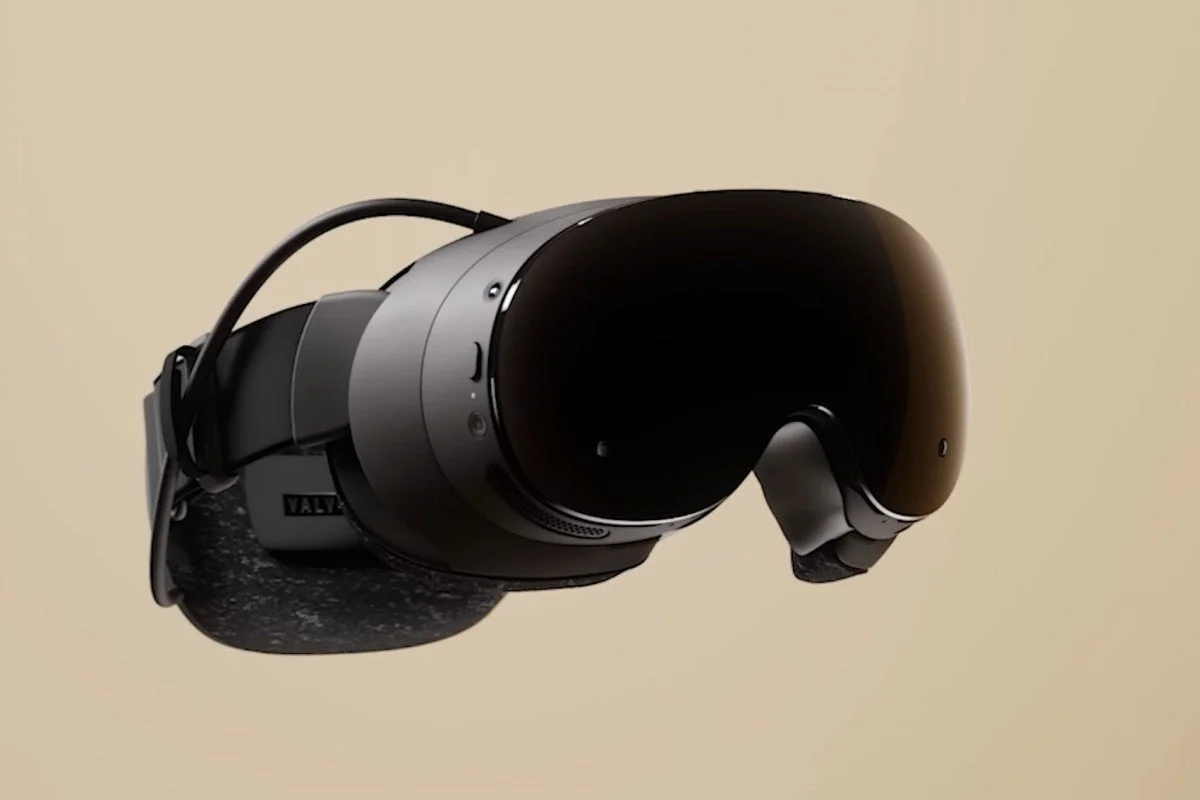Valve Returns to VR Headsets with the Steam Frame
After discontinuing the Valve Index, a VR headset, Valve is announcing that they are returning to VR with the Steam Frame coming in 2026. Dev kits are actually already in the world, hinting that Valve wants developers on it as early as possible.
Image: Valve
The headset comes after a market that has exploded in the last 5 years with new versions of VR headsets, like the PlayStation VR2, Pico 4, Apple Vision Pro, Samsung XR, Meta Quest lineup, and many more.
This headset can both wireless stream and have standalone VR, which puts it between the Meat Quest and higher-end PC-based headsets like the PSVR2 or the older Valve Index. It is powered by the Snapdragon 8 Gen 3 chip, has 16GB of RAM, and offers storage options up to 1TB, more like modern gaming headsets. It supports Android games, which makes it compete directly with the Meta Quest ecosystem, while also running full SteamOS titles. It gets a plug-and-play 6GHz adapter, which is similar to the Quest’s Air Link, PSVR2’s wired setup, and the Vison Pro’s Mac mirroring, making it have a balance between a gaming device and a normal VR device.
Valve put some nice hardware details in the Frame, like Foveated Streaming with eye tracking, which is rare outside of the Vision Pro and Quest Pro. It also has a lightweight design at 440g, has pancake lenses with 2160x2160 pixels per eye, up to a 144 Hz refresh rate, and a rear-battery strap to balance weight. It also uses IR LEDs for low-light use.
Some differences from competitors are how the Vion Pro prioritizes mixed reality, while the Steam Frame prioritizes games. The PSVR2 has eye tracking for gameplay, but not all the time, while the Fram does both. Lastly, the Quest 3 offers great MR, but the Steam Rame looks like it is more focused on Steam gaming and Android games rather than productivity. So basically every headset has its own features, so you can pick the one that fits what matters most to you.
Valve also made some controllers to go with the Steam Frame. They have 6-DOF tracing, magnetic thumbtacks, AA battery power, and compatibility with the new Steam Controller. The older Index worked with HTC on Vive, but none actually reached mainstream success like the Meta Quest line. With this new controller, they have an advantage with Half-Life: Alyx and the massive Steam library, something competitors can’t match.
Image: Valve
SteamOS is growing thanks to the Steam Deck, making Steam Frame’s software foundation a lot stronger than Valve’s earlier VR attempts. This could be Valve’s first actual shot at challenging competition like Meta in mainstream VR, or it could also stay niche depending on battery life, pricing, and software support. Pricing and availability are still unknown, which keeps expectations cautious right now.
Do you think that the Steam Frame will actually compete with the big companies, or is it mostly there for Steam fans? Do you think Valve waited too long to get back into VR? Could this finally be a real competitor to the Meta Quest? After so many headsets coming out in the last 5 years, do you think we need another one? Let us know in the comments!
Source: Engadget Images: Valve

